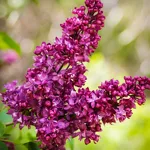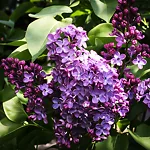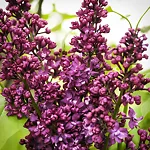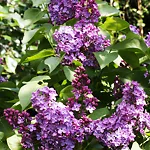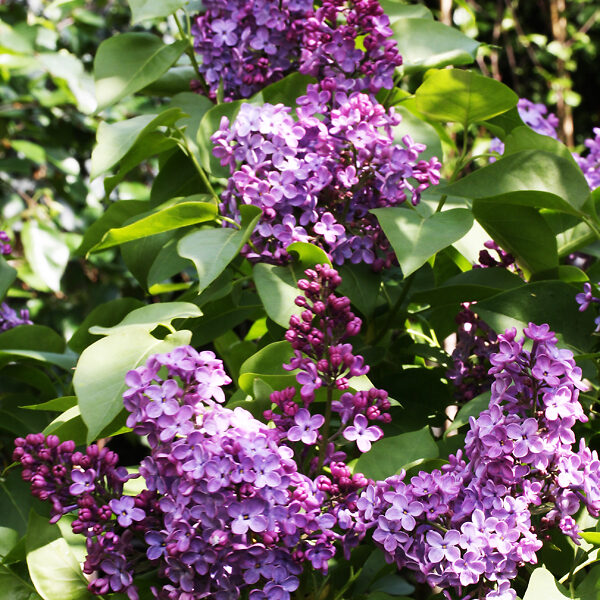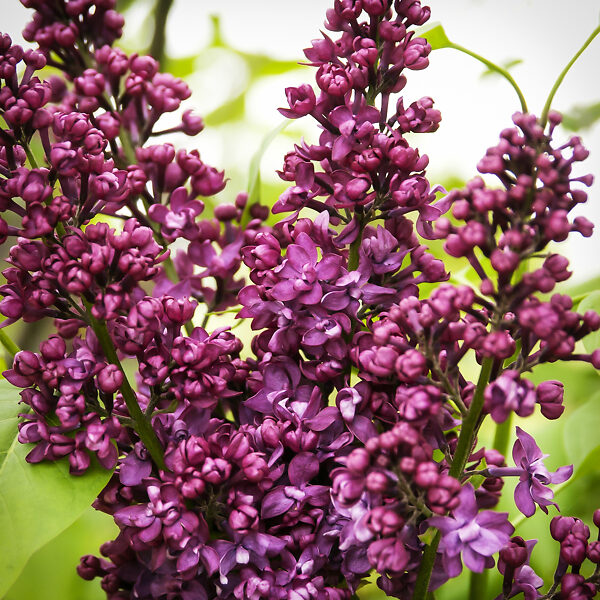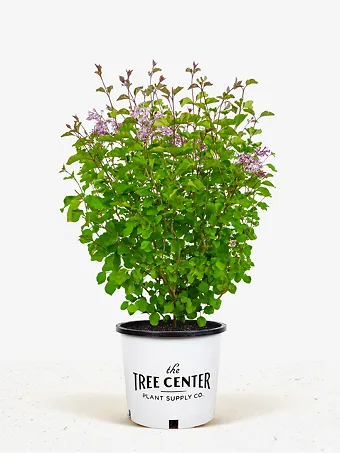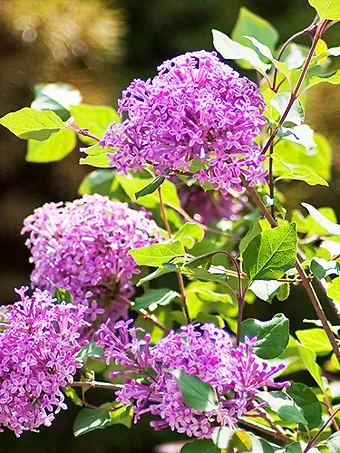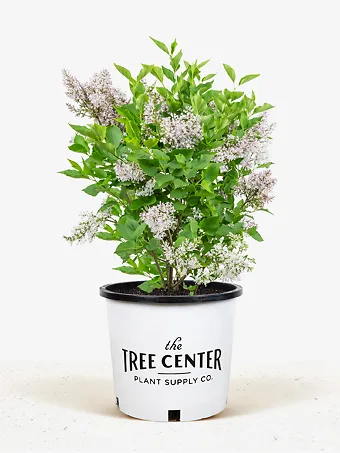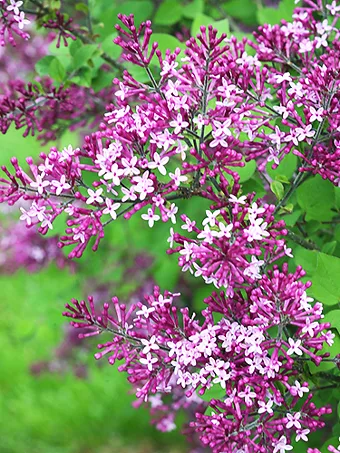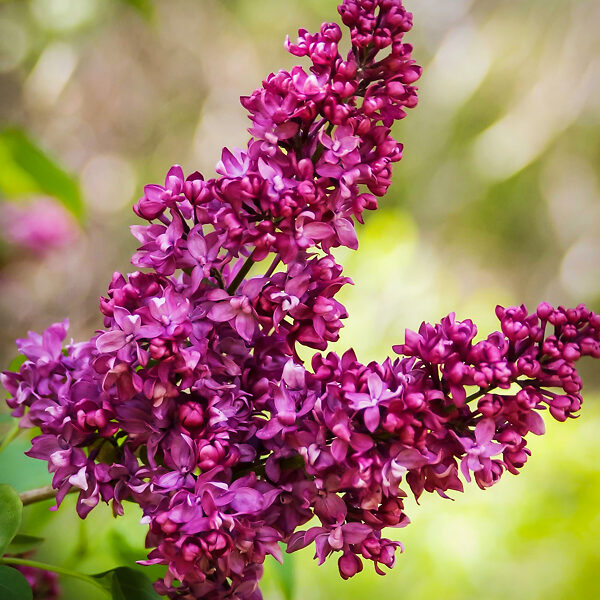
Charles Joly Lilac
Syringa vulgaris ‘Charles Joly’View more from Lilacs
Charles Joly Lilac
Syringa vulgaris ‘Charles Joly’
30 day - ARRIVE AND THRIVE™ guaranteeLearn more


Special Features

Botanical Name
Syringa vulgaris ‘Charles Joly’
Outdoor Growing zone
3-7
Mature Height
10-12
Mature Width
8-10
Sun needs
Full Sun, Partial Sun
The Charles Joly Lilac is an upright deciduous shrub growing up to 12 feet tall and 10 feet wide, if not kept smaller by pruning. It has attractive heart-shaped leaves and blooms in May, between the bulbs and the summer shrubs. The trusses of blooms are 8 inches long, packed with many double flowers that are brilliant royal purple, and they release the classic lilac perfume that is so widely loved. Blooms last a month, and this plant is ideal for the back of shrub beds, beside windows and doors, in corners of your yard or as a screen. Enjoy the true pleasure of a classic heirloom French lilac.
- Huge upright clusters of double blooms in rich purple tones
- Richly fragrant, filling your garden with delicious scent
- A true heirloom variety created in France over 100 years ago
- Ideal for very cold areas, even zone 2
- Grows well in alkaline soils
The Charles Joly Lilac should be planted in full sun to produce the most blooms, and it grows in any well-drained soil, even in urban gardens and drier soils. If pruned every year it is generally free of serious pests. Prune after flowering, removing spent flowers, trimming back long branches and taking out some of the oldest stems.
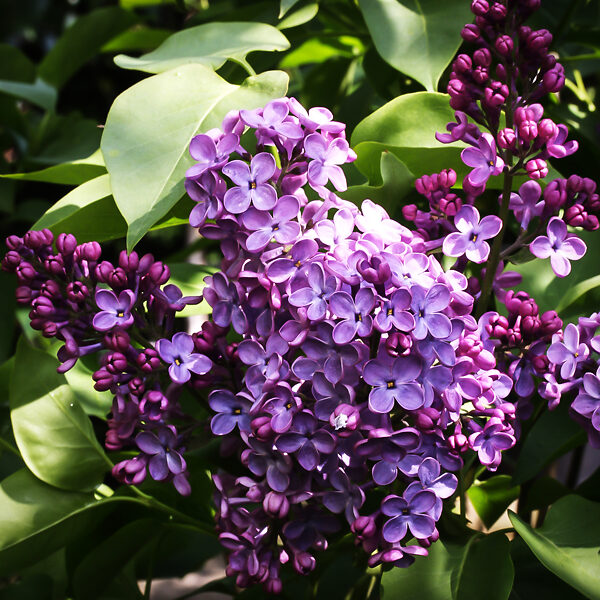
Not all garden situations are created equal, and some gardeners can feel limited by their soil and climate. This may sometimes be true, but if you live in cold areas, or don’t have the acid soil, you do have real advantages. There are lots of shrubs that need cold conditions and many that enjoy alkaline soils much more than acid ones. Top of that list – and enjoying both things – are the lilacs. These wonderful old-fashioned shrubs overflow with beauty, perfume and nostalgia for grandmother’s garden. The secret to happiness is to enjoy what you have, and lilacs let you do exactly that. Most are completely happy even in icy zone 2, and they much prefer alkaline or neutral soils, finding acid ones uncomfortable. There are some very good newer dwarf lilacs, but if you are going to ‘do’ lilacs – and you should – then go for full-on nostalgia and grow the classic French lilacs, created by the famous plant breeder Victor Lemoine at the end of the 19th century. Still as glorious and fragrant as ever, the Charles Joly Lilac is one of his best. Its enormous heads of double flowers are rich, regal purple, and that scent will fill your heart with nostalgia and dreams of simpler times. Go for heirloom beauty – you know you want to.
Growing the Charles Joly Lilac
Size and Appearance
The Charles Joly Lilac is an upright deciduous shrub, growing 10 to 12 feet tall and up to 10 feet wide. The sturdy upright branches have smooth gray bark, becoming darker brown-gray and more rugged on older stems. The heart-shaped leaves are up to 5 inches long, with a smooth, slightly glossy surface and smooth edges. They are a soft, slightly bluish green, and when out of bloom they make a pleasant garden backdrop.
Blooming takes place in May, in that gap between spring bulbs and summer shrubs like roses – another good reason to be growing lilacs in your garden. The flowers are carried in fat clusters up to 8 inches long, packed with many small flowers. These are double, with each flower having 4 larger petals and a center of several small ones, giving the blooms a lush richness and beauty. The color is a dramatic, deep but bright purple that looks just as wonderful in the garden as it does in a vase on a table. And of course there is that fabulous fragrance that is loved by so many of us.
Using the Charles Joly Lilac in Your Garden
This valuable shrub is ideal for the back of garden beds, in the corners of your yard, or for planting on a lawn. It makes a great screen, spaced 6 feet apart, and it is lovely to grow beside a door or window around your house, where the fragrant will drift in through the windows newly opened for the first warmer days.
Hardiness
One of the great things about the Charles Joly Lilac is how incredibly hardy it is, thriving even hardy in bone-chilling zone 2, a zone found only in Alaska, parts of Wyoming and of course Canada. It grows well in all mild zones too, including zone 7, but after that there is not enough winter cold to ripen the buds, and the hot humid summers are not favorable.
Sun Exposure and Soil Conditions
Full sun is best for growing your Charles Joly Lilac. It will grow in partial shade, but the amount of flowering will be greatly reduced, so what is the point? It grows easily in almost all well-drained soils, preferring drier soils that are still fertile and rich in organic material. Dig in plenty of compost or rotted manures when preparing the planting spot. It doesn’t like acid soils, doing best in neutral and alkaline soils, so if that is your soil, here is a superb plant for your garden.
Maintenance and Pruning
There can be some pest problems with lilacs, but these are controlled if you prune regularly, and they usually won’t be serious except on neglected plants. Regular pruning is the secret to growing lilacs with masses of big blooms. Begin in summer by removing the spent flower heads as soon as they fade. Making seeds draws strength from the plant that should be going to next year’s blooms, so removing those flowers early makes a big difference. Then shorten back the longest stems, to keep your plant smaller and more bushy. Remove any shoots coming from below the ground, as these are from the seedling lilac used to make the roots. Once the main stems are several inches thick, remove some of the oldest ones each year, cutting low down, to encourage vigorous new growth. This is the only attention needed to grow the best lilac bushes in your neighborhood.
History and Origin of the Charles Joly Lilac
The common lilac, Syringa vulgaris, grows wild in the mountains of south-eastern Europe around the Mediterranean and the Black Sea. It was grown in gardens for centuries and probably arrived in America with the earliest settlers, first grown in Portsmouth, New Hampshire in the 1600s. Those older forms were largely replaced in the late 19th century by the French lilacs, the work of Victor Lemoine at his nursery in Nancy, France. Already a successful breeder, he found himself trapped in his nursery by the Franco-Prussian War, and turned to his garden for escape. With his wife he began breeding with a rare double-flowered plant called ‘Azurea Plena’, and gradually they developed about 200 new varieties, revolutionizing lilacs and raising them to a whole new level of beauty.
The variety he called ‘Charles Joly’ was identified in 1896, and named after Victor Charles Joly, a doctor, hotel owner and writer on horticulture who Lemoine would have known well. The name wasn’t officially registered until 1953, and should be pronounced as Sharles Jo-li.
Buying the Charles Joly Lilac at the Tree Center
This beautiful plant was given the Award of Garden Merit in 1993 – almost a hundred years after it was created – by the famous Royal Horticultural Society of Britain. This stamp of approval tells you this is a high quality plant worth a place in every garden. Make that your garden, but order now, while we still have stock available – they go very quickly.
